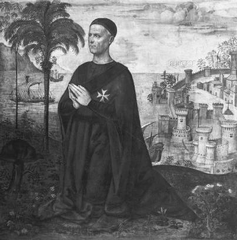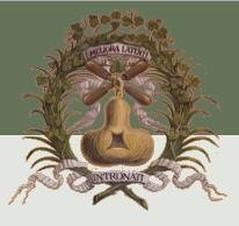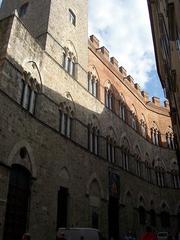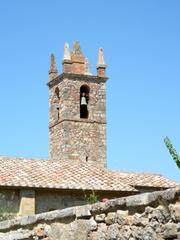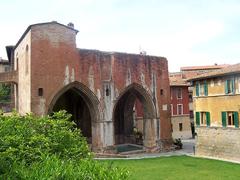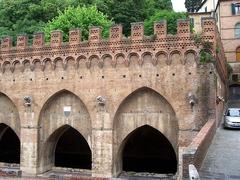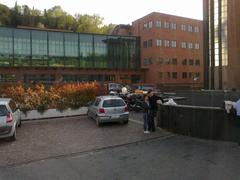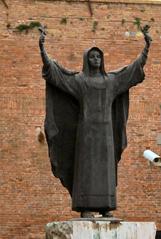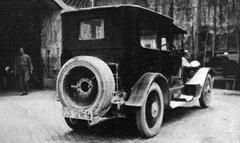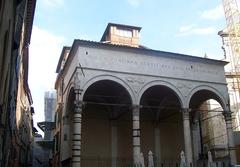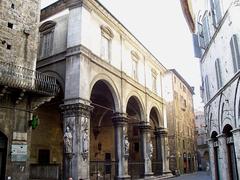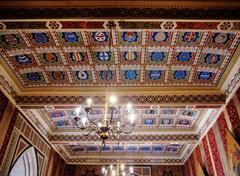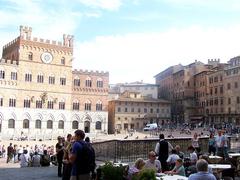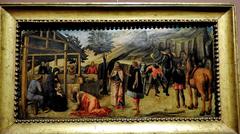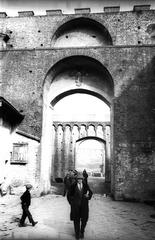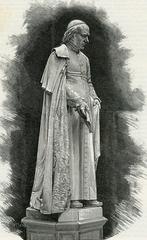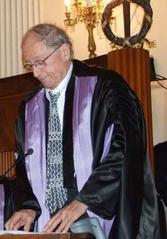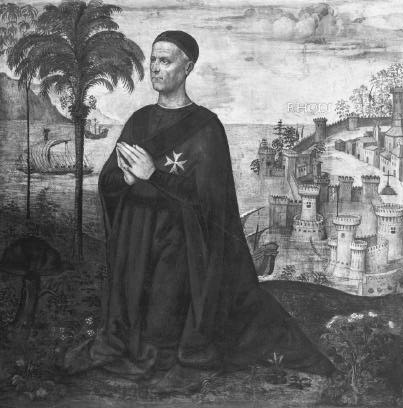
Siena Cathedral Visiting Hours, Tickets, and Guide to Siena Historical Sites
Date: 14/06/2025
Introduction to Siena Cathedral
Siena Cathedral, officially the Cathedral of Santa Maria Assunta, stands as a crowning achievement of Italian Gothic architecture in the heart of Tuscany. Its dramatic striped façade of black-and-white marble, soaring dome, and rich artistic interiors reflect centuries of religious devotion and civic pride. The site, originally sacred to the Roman goddess Minerva, evolved through the Middle Ages into a cathedral that embodies both the spiritual and cultural aspirations of Siena (Opera del Duomo Siena; Wikipedia).
Inside, visitors encounter masterpieces by Nicola Pisano, Donatello, Michelangelo, and Bernini; the dazzling marble mosaic floor; and the remarkable Piccolomini Library, frescoed by Pinturicchio. The cathedral’s layered history is evident in its evolving architecture, ambitious (and unfinished) expansions, and in its ongoing role as the focal point for Siena’s major civic and religious events—including the famous Palio di Siena (DailyArt Magazine; Finestre sull’Arte).
This guide offers a comprehensive overview of Siena Cathedral’s history, architecture, and practical visitor information, ensuring that art lovers, travelers, and pilgrims alike can make the most of their visit (Albergo Minerva; GetYourGuide).
Table of Contents
- Origins and Early Development
- Architectural Evolution
- Artistic Significance
- Role in Sienese Culture and Identity
- Essential Visitor Information
- Discover Siena Cathedral: Visiting Hours, Tickets & Architectural Highlights
- Siena Cathedral: Visiting Hours, Tickets, and Its Cultural & Civic Significance
- Visitor Experience: Siena Cathedral Visiting Hours and Tickets
- Summary and Final Tips
- References
Origins and Early Development
The origins of Siena Cathedral reach back to a site venerated in Roman times, later transformed into a Christian church by the 9th century (Opera del Duomo Siena). The present structure took shape from the 12th century onward, reflecting Siena’s growing power as a city-state on the Via Francigena pilgrimage route. Notable milestones include the first documented reference in 1058 and the major construction phase from 1196 to 1263, resulting in a Latin cross plan with a transept, dome, and bell tower (Wikipedia; Albergo Minerva).
Architectural Evolution
Romanesque-Gothic Fusion
Siena Cathedral’s harmonious blend of Romanesque and Gothic elements is evident in its striped marble façade and interior, echoing the city’s heraldic colors. The façade, begun in the late 13th century by Giovanni Pisano, is adorned with intricate sculptures, spires, and mosaics (Wikipedia; DailyArt Magazine). The dome, completed in 1264 and later capped by Bernini’s lantern, predates the famous Florentine dome by over a century.
The Unfinished Expansion
In 1339, Siena’s ambition led to plans for the “Duomo Nuovo,” a vast expansion that would have made it among the largest churches in Christendom. The Black Death of 1348, along with structural problems, halted this project, leaving behind the dramatic “Facciatone”—a panoramic terrace with sweeping views over Siena (Finestre sull’Arte; Wikipedia).
Artistic Significance
Masterpieces and Renowned Artists
The cathedral is a showcase for Italian art across centuries. Nicola Pisano’s marble pulpit (1265–68) is a foundational work of Italian sculpture, blending classical and Gothic themes (Opera del Duomo Siena). Donatello and Michelangelo contributed major sculptures, while Bernini’s Baroque additions include the dome lantern and Chigi Chapel. The Piccolomini Library, frescoed by Pinturicchio, is a Renaissance jewel (DailyArt Magazine; Headout).
The Magnificent Floor
The marble mosaic floor, created over two centuries by about 40 artists, is one of Italy’s greatest artistic marvels. Its 56 panels depict biblical stories, allegories, and the legendary she-wolf of Siena. The floor is usually covered for protection and revealed only for limited periods each year (Finestre sull’Arte).
The Piccolomini Library
Commissioned by Cardinal Francesco Piccolomini (later Pope Pius III), the Piccolomini Library boasts Pinturicchio’s brilliant frescoes and rare illuminated manuscripts, offering a vivid glimpse of Renaissance Siena (Headout).
Role in Sienese Culture and Identity
Siena Cathedral is deeply woven into the city’s identity and civic pride. The black-and-white stripes symbolize Siena’s legendary founders and unity, while its commanding position on the city’s highest hill marks it as a spiritual and urban focal point (Wikipedia; Albergo Minerva). The cathedral is integral to traditions like the Palio di Siena and remains a center for festivals, processions, and community gatherings.
Essential Visitor Information
Location and Access
Siena Cathedral is located at Piazza del Duomo, 8, 53100 Siena, Italy (Headout). It is easily reached on foot from the city center.
Opening Hours and Tickets
- March–October: Monday–Saturday 10:00–19:00 (last entry 18:30); Sunday 13:30–18:00.
- November–February: Monday–Saturday 10:00–18:00; Sunday 13:30–17:30.
- Check for variations during religious services or special events on the official website.
Ticketing
- OPA SI Pass: Access to all sites in the complex (cathedral, library, baptistery, crypt, museum, Facciatone). ~€18.50 in 2025 (italy-sights.info).
- Special Tours: Porta del Cielo (Gate of Heaven) rooftop tour; access via advance booking (anywhereweroam.com; GetYourGuide).
- Discounts: Available for students, children, and Siena residents.
Visitor Tips
- Dress Code: Modest clothing covering shoulders and knees required.
- Floor Unveiling: The marble floor is uncovered for limited weeks, usually mid-August–late October.
- Photography: Non-flash photography permitted unless otherwise indicated.
- Climbing Facciatone: Panoramic views; not accessible for those with limited mobility.
Accessibility
Wheelchair access is available to the main nave; crypt and Facciatone have stairs and may be inaccessible for some (Albergo Minerva).
Nearby Attractions
- Baptistery of San Giovanni
- Crypt
- Museo dell’Opera
- Piazza del Campo
- All within walking distance and often included with the OPA SI Pass (Headout).
Discover Siena Cathedral: Visiting Hours, Tickets & Architectural Highlights
Practical Information for Visitors
- Opening Hours: Generally 10:00–19:00 (seasonal changes apply).
- Ticket Purchase: Online booking recommended via official site or GetYourGuide.
- Accessibility: Main floor accessible; some areas, including Facciatone and rooftop tours, require climbing stairs.
- Guided Tours: Art, history, and rooftop tours available; advance booking advised.
- Nearby Landmarks: Explore Piazza del Campo, Palazzo Pubblico, and Torre del Mangia.
Architectural and Artistic Highlights
- Façade: Giovanni Pisano’s Gothic sculptures and mosaics.
- Interior: Black-and-white striped marble columns, star-studded ceilings, 172 popes’ busts, and the marble mosaic floor.
- Pulpit: Nicola Pisano’s masterpiece.
- Dome: Early Gothic, later topped by Bernini’s lantern.
- Piccolomini Library: Pinturicchio frescoes and illuminated books.
- Sculptures: Works by Donatello, Michelangelo, and Bernini.
- Crypt and Baptistery: Medieval frescoes, bronze baptismal font.
- Museo dell’Opera & Facciatone: Original sculptures, Maestà altarpiece, panoramic terrace.
- Gate of Heaven Tour: Exclusive rooftop access.
Siena Cathedral: Visiting Hours, Tickets, and Its Cultural & Civic Significance
Siena Cathedral is not just an architectural gem but a vital hub of civic life. Its construction and embellishment were community projects, reflecting Siena’s desire to rival Florence and other Tuscan cities (Wikipedia). The Piccolomini Library celebrates Pope Pius II, a Sienese native, and the cathedral remains central to traditions like the Palio di Siena. Preservation, public events, and educational programs ensure the Duomo’s ongoing relevance (siena-cathedral.com).
Visitor Experience: Siena Cathedral Visiting Hours and Tickets
Best Times to Visit
Arrive at opening (10:00) or late afternoon for fewer crowds. The marble floor unveiling (mid-August–late October) is a highlight but draws more visitors (siena-cathedral.com; italy-sights.info).
Ticketing and Admission
- OPA SI Pass: ~€18.50 (2025); covers all main sites.
- Porta del Cielo Tour: Requires separate booking.
- Seasonal Pricing: Higher during floor unveiling.
Navigating the Cathedral Complex
- Main Sites: Cathedral, Piccolomini Library, Baptistery, Crypt, Museum, Facciatone.
- Tour Duration: 2–3 hours recommended.
Dress Code, Services, and Visitor Tips
- Dress modestly.
- Mass times: Weekdays 9:30 AM; holidays and eves 8:00, 11:00, 12:15, and evening Mass.
- Silence and respect during services.
Managing Crowds and Accessibility
- Peak Times: Weekends, holidays, and floor unveiling season.
- Accessibility: Main floor accessible; stairs to some sites.
Summary and Final Tips for Visiting Siena Cathedral
Siena Cathedral is a living monument—an intersection of history, art, and community spirit. Careful planning around visiting hours, ticketing (OPA SI Pass), and seasonal events like the floor unveiling will maximize your experience. Don’t miss nearby attractions or the chance to join a guided tour for deeper insight. For up-to-date information and audio guides, download the Audiala app.
